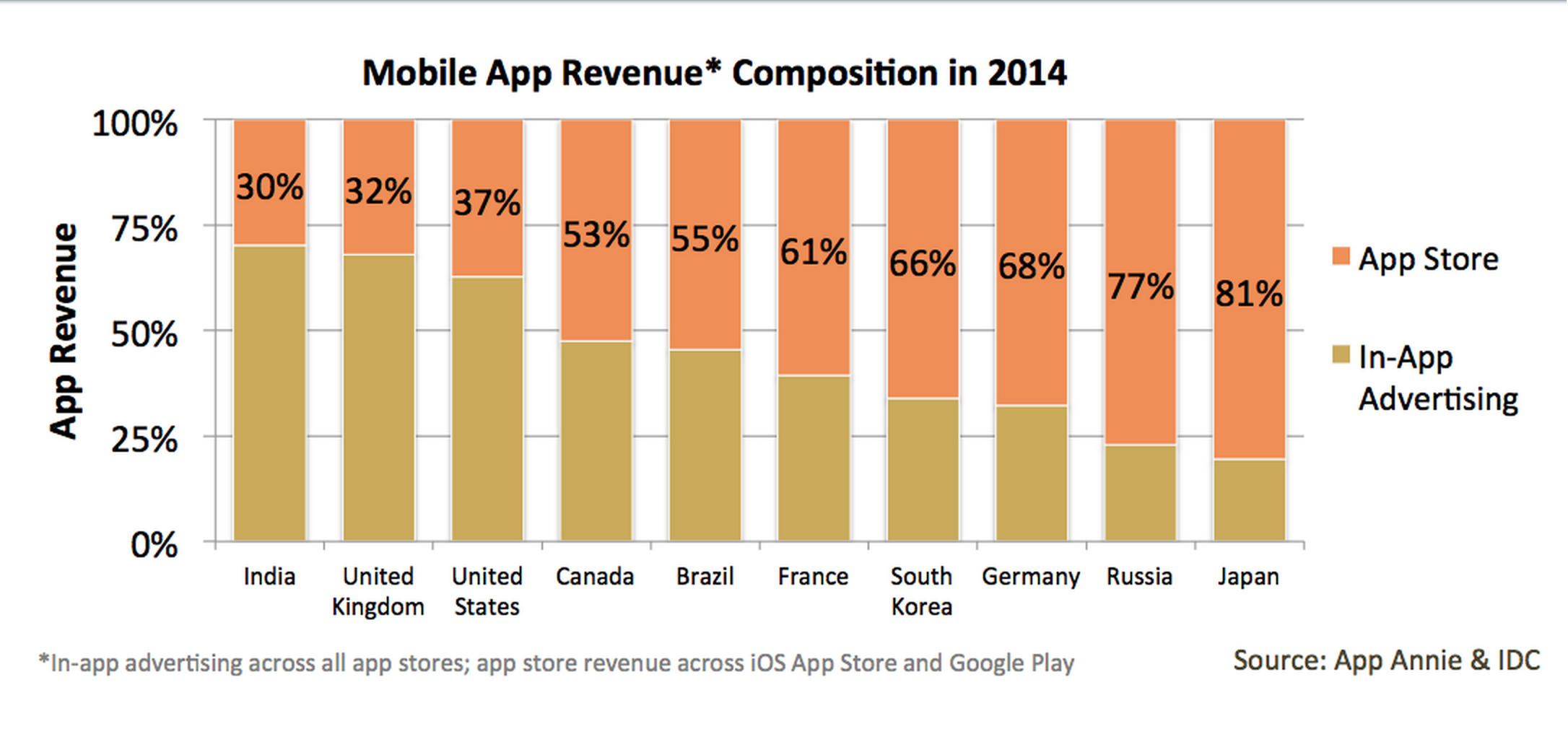Monetization techniques – Localizing beyond language
In this blog post we will discuss about adjusting an app’s monetization strategy based on the location and market profile of its user base.
Considering to localize an app’s content when deciding to expand to different markets it’s a key point to its success and adoption. However, moving one step further and adjusting the monetization strategy of the app, based on location and characteristics of the addressed market, can be the “make or break” factor of this app’s performance in its revenue charts!
One size does not fit all. We have already discussed this in previous posts. Segmenting the user base of an app and applying different monetization techniques based on the profile of each group can be really rewarding. One of the major groups that can be used and applied in a monetization strategy, is around localisation.
Dynamic monetization model
In App Annie and IDC latest report regarding mobile app revenue composition across iOS App Store and Google Play, we may see that each market reacts differently in mobile revenue models applied.

For example, in India, in-app advertising works much better than in-app purchases while in Japan we see the exact opposite. This trend could be happening for several reasons, it could be a cultural thing, a matter of standard of living or even a practical thing like the absence of support for widely used payments methods. Therefore, it would be wise for app publishers to study the markets they’re getting into and adjust their monetization strategies accordingly. Having a dynamic monetization strategy can be really beneficial. App publishers for example, can provide in-app purchases for users in Japan while dynamically changing to in-app advertising model for users in India. This way the publisher can make the maximum out of his app’s user base since the monetization model will be adjusted to the special characteristics of each market.
Dynamic pricing
Differences in each market can be applied effectively in the pricing model too. For example in US, $3.99 for an in-app purchase may not be too much for the users of an app, but for Indian users this price may be way too much. Having that said, what app publishers can do to overcome this, is to create different tiers of pricing within their apps for different countries, based on the profile of each market. This way their in-app monetization opportunities could be feasible for most of the users of the app.
Dynamic ad network selection
Finally, one of the key things that app publishers have to deal with, when forming their in-app advertising strategy is to choose the right ad network for their audience. One size does not fit all applies to ad networks too. Different ad networks are stronger in different countries. For example, an ad network may have very good inventory in US but in China the power of this network in terms of ad inventory, could be really weak. Having that said, app publishers should either use a mediation solution and combine networks, or based on their app’s user base profile and demographics, integrate on their own different ad networks that will target different segments of their user base. This way, they will ensure high and relevant fill rates for most of their users without any constrains and limitations based on the addressed market.
To conclude, app publishers should consider different and dynamic approaches when applying a monetization strategy either in terms of the model, price tiering or ad network selection when an app is introduced in different countries or markets. This approach can become very beneficial for the adoption and engagement of their apps and result in good performance in terms of revenue generation.
Do you want to distribute your survey? Pollfish offers you access to millions of targeted consumers to get survey responses from $1 per complete. Launch your survey today.
Global GSK Shingles Survey Insights
Original Insights,The Pollfish Blog
February 24, 2024
Shingles misconceptions: new global survey commissioned and funded by GSK highlights widespread…
B2B Sales Emails: Are they Effective or a Nuisance?
Original Insights,The Pollfish Blog
September 6, 2022
Are B2B sales emails a thorn in your side? Do they drive you crazy? Virtually all white-collar…
